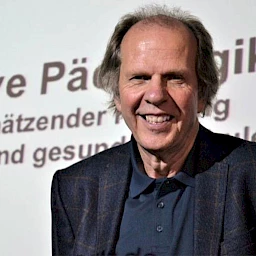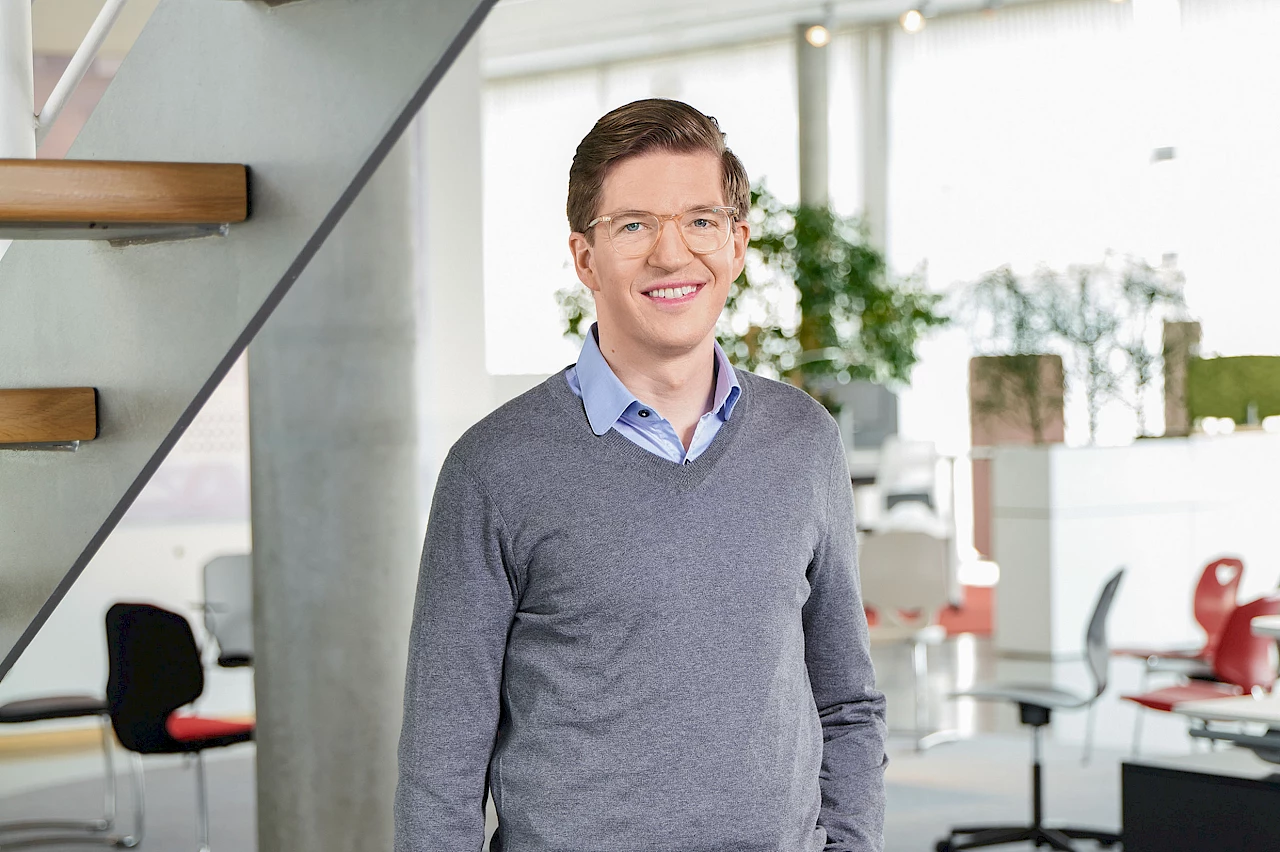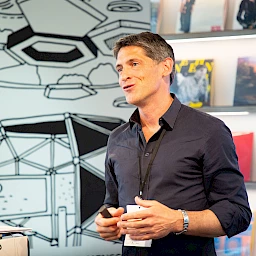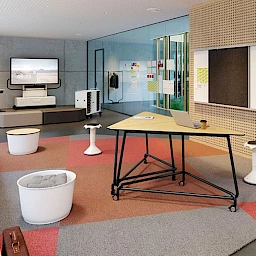Which trends from the area of education can be transferred to the world of work? The IBA Forum editorial team talked with Philipp Müller, the Managing Director of the furniture company VS Vereinigte Spezialmöbelfabriken GmbH & Co. KG, about the educational dimension of architecture and aesthetics.
What are the current furnishing trends in schools and educational institutions, and what can companies learn from them?
Schools have always been a kind of microcosm that can be transferred to society as a whole and thus also to the world of work. At the moment, the trend towards more flexibility is moving into schools. Lecture-style teaching is increasingly being supplemented with other pedagogical methods. The important themes include learning across age groups, other groups and school classes, as well as the expansion of all-day schools. Maker spaces can now be found in schools as well. Meanwhile, more flexibility is increasingly being seen in schoolrooms and their furniture. The rooms themselves cannot be adapted quite so quickly, but it’s easier to adapt the furnishings. We’re observing many of these trends, especially the trend toward more flexibility, in the office world as well. New Work — and many people are already talking about New Learning as well — requires much more flexibility in terms of spatial design and equipment.
The concept of lifelong learning also applies to the world of work. What does an office that promotes the urge to learn look like?
In our daily and our working lives, we frequently see new challenges that make lifelong learning necessary. Work is a confrontation with new problems, and in order to solve them you have to acquire the right tools or skills. That’s why New Work — or New Learning — also requires a great deal of flexibility in terms of spatial design and equipment. In this area, I follow one of the basic principles of architecture: Design should be oriented toward people’s needs. In this case, it must be oriented toward the employees’ needs. There might be tasks that can be accomplished most effectively by means of concentrated individual work. There are tasks that can best be done by an interdisciplinary team. And there are tasks on which you can’t make any progress by means of either method. Here the office provides support as a place for meeting and interaction. Meeting colleagues from other parts of the organisation at the coffee machine has often been the key to solving a problem.
„The main task of the office is to create an environment that responds to people’s needs — and these needs are extremely varied.“ Philipp Müller, VS Vereinigte Spezialmöbelfabriken GmbH & Co. KG
What kinds of spaces promote creativity, commitment and a sense of well-being in equal measure?
A room or a furnishing design can seldom meet all of the users’ needs. That’s why modern work environments offer spaces and furniture for the whole range of possible uses: for casual conversations and concentrated individual work as well as group work. Today, a modern office space must make all of these scenarios possible.
Are companies recognising that they need to redesign their offices in order to make them genuine places of interaction and learning?
They realise it at the latest when they need to recruit new employees or keep existing ones, and when they need to fulfil current demands and requirements. That’s the point at which companies confront exactly these questions. And the question is: How can I create an environment that enables lifelong learning, New Work or New Learning? This focus is then strongly manifested in a company’s spatial concept and its furniture.
So the learning process and the learning environment are closely connected. How should rooms be designed so as to allow individuals and teams to develop their potential?
Here we have to differentiate between tasks and departments. A bookkeeping team has completely different needs than the product development team or the marketing department. Consequently, we always have to create exactly the environment that each team needs — with the corresponding amount of flexibility. The furnishings should always be top-quality. Space has an effect! In order to develop their potential, individuals must feel that they are welcome and appreciated. That’s why it’s always necessary and worthwhile to think about design and aesthetics.
Please also read

„Today it’s an undisputed fact that lifelong learning is absolutely necessary. So learning has to have a place in the office as well. This is a human need that architecture and spatial design must respond to.“ Philipp Müller, VS Vereinigte Spezialmöbelfabriken GmbH & Co. KG
The role of the teacher is changing, and that’s not the only area of change. Managers are also playing a new role in the world of work. To what extent can changes in spatial design support managers in their new role?
In schools, people are talking more and more often about the role of the learning guide. These are pedagogically trained individuals who provide students with guidance and accompany them as they learn how to acquire knowledge on their own. This can be transferred to the world of work almost one-to-one. Today managers are more like coaches who support their employees’ efforts to develop personally and professionally so that they can deal with the tasks and problems facing them. The aim is to empower and support the employees. When transferred to the workplace, this can also mean that managers act as models to a certain extent, in terms of how they organise their workplace, communicate and deal with problems. Every manager has an impact, including the impact created by how they position themselves physically within the team.
In the technology department of VS, you deal with the integration of technology into schools and companies. What role does the digital world play in education?
As in companies, the digital world can no longer be extracted from the field of education. It’s important to introduce technology not just for its own sake but in ways that offer genuine added value. In this process it doesn’t matter whether learning and cooperation are taking place in a shared physical space or in different spaces. Digital technology can make it possible to interact inside a physical space or across a physical distance.
Mr. Müller, thank you very much for talking with us.
VS Vereinigte Spezialmöbelfabriken GmbH & Co. KG is an internationally operating leading producer of schoolroom furniture with headquarters in Tauberbischofsheim. This company, which is now in the fourth generation of family ownership and management, is also doing successful business as an office and public property outfitter.
Since 1898, VS has developed, produced and sold furniture and media equipment for the knowledge society — schools and universities, administrative bodies and ministries, companies and corporate groups. You can find more information at https://www.vs.de/en/.
Cover photo: ©VS Vereinigte Spezialmöbelfabriken GmbH & Co. KG






